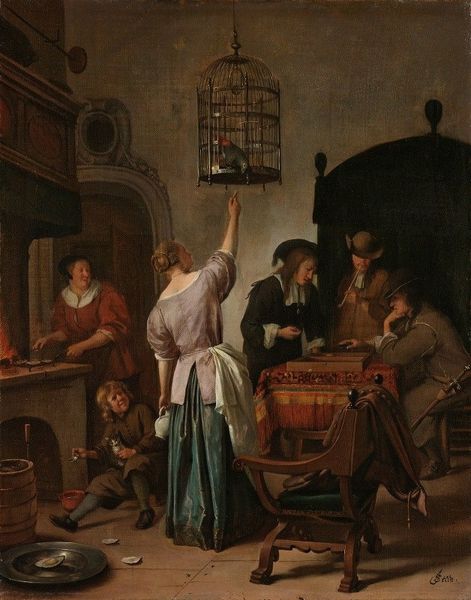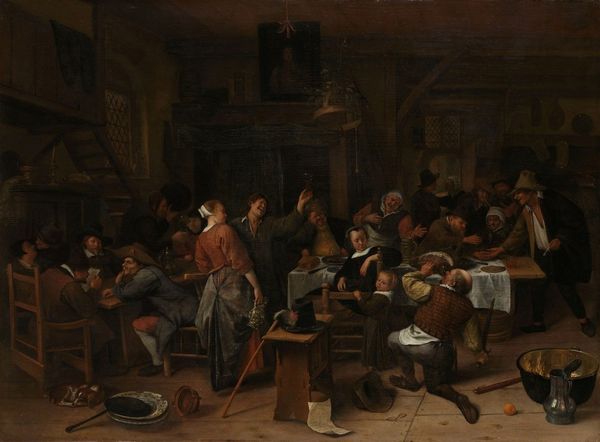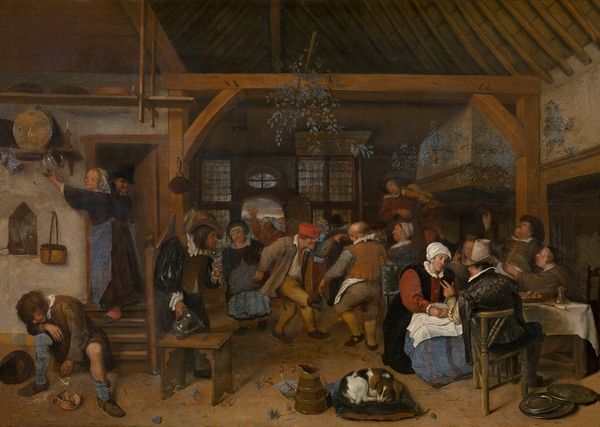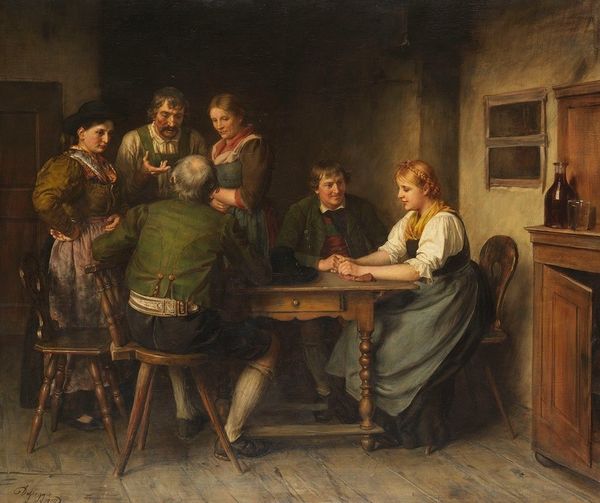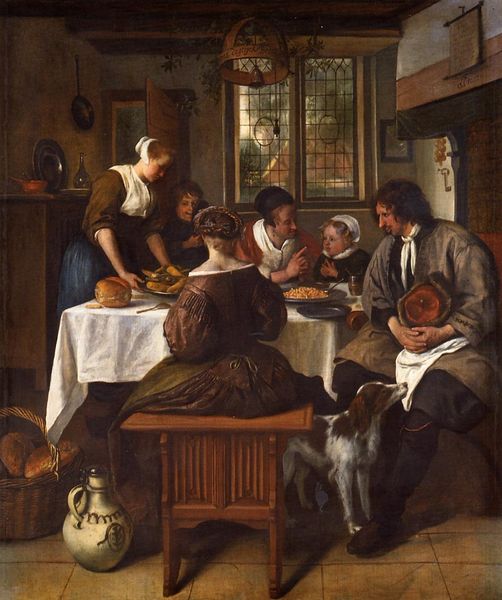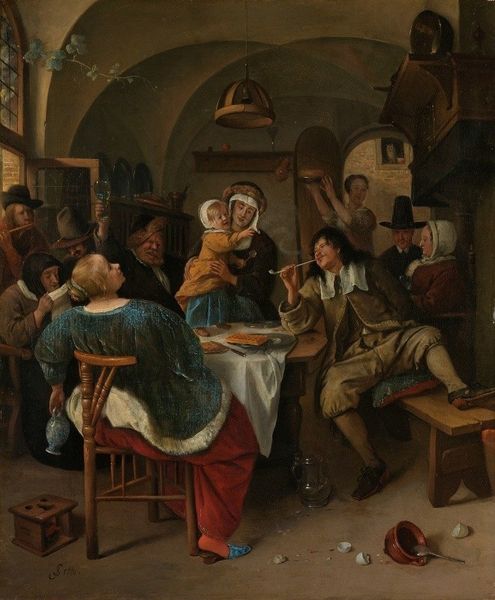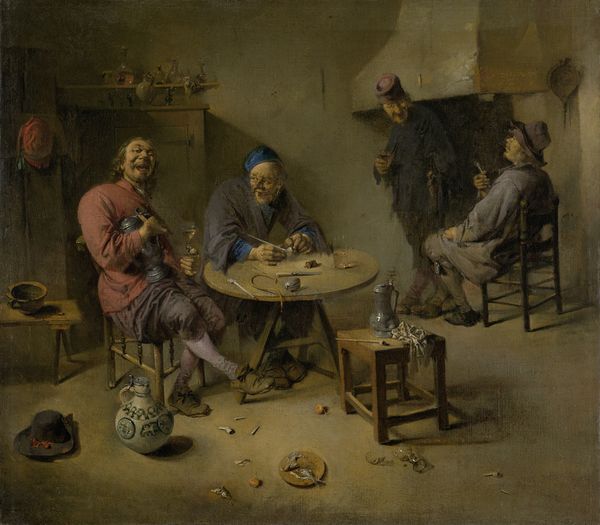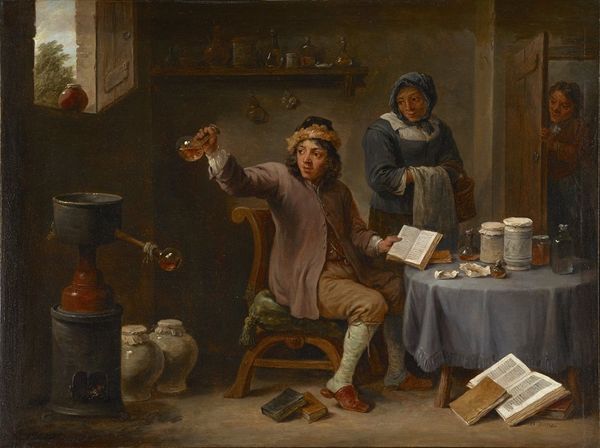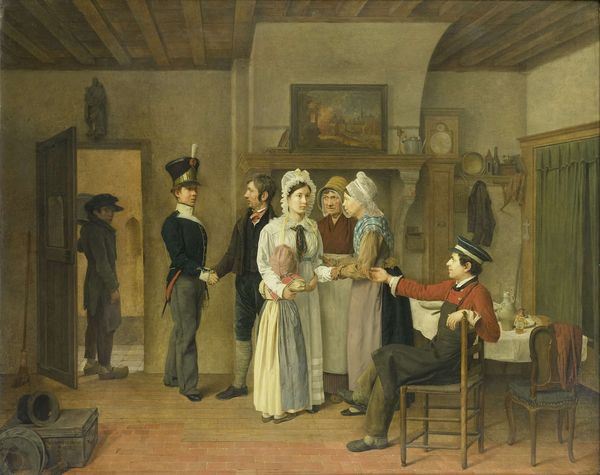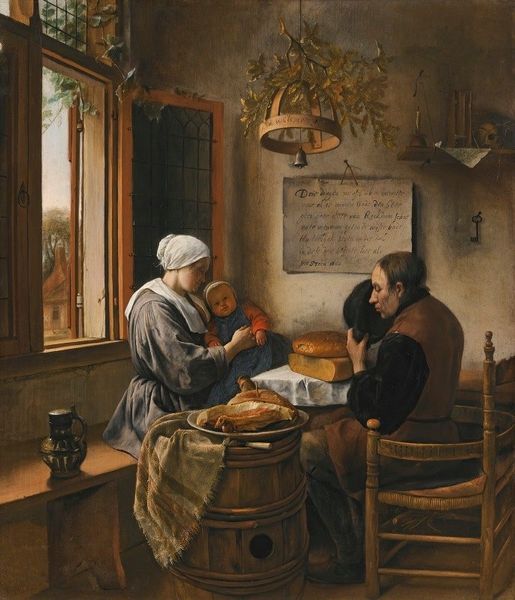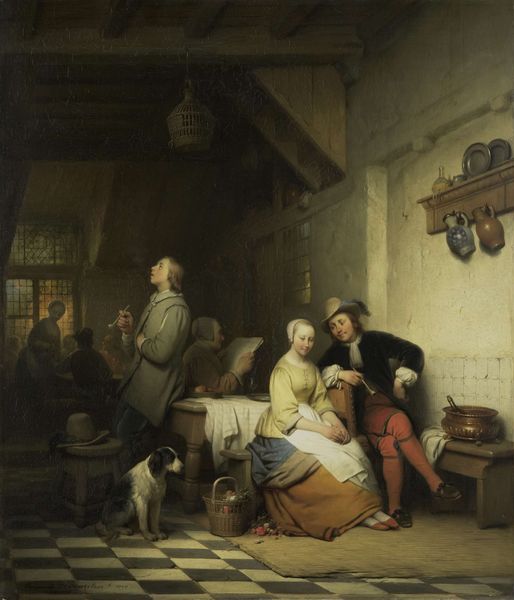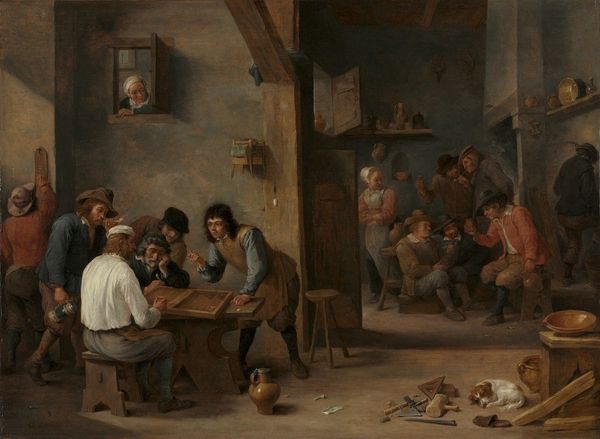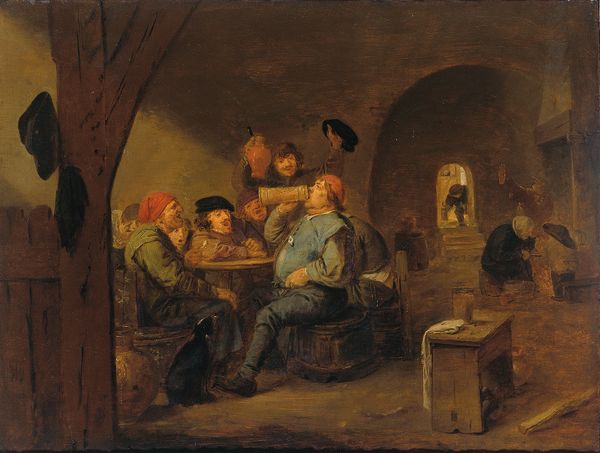
painting, oil-paint
#
gouache
#
painting
#
oil-paint
#
figuration
#
romanticism
#
watercolour illustration
#
genre-painting
#
realism
Dimensions: height 55.5 cm, width 65.5 cm, depth 6.2 cm
Copyright: Rijks Museum: Open Domain
Editor: Here we have "Bible Reading" by Eduard Pistorius, painted in 1831 using oil paint. It’s a pretty busy scene, but the arrangement of figures around the table really holds my attention. What stands out to you in this piece? Curator: The artist's arrangement immediately draws my eye. Notice the pronounced diagonals created by the light streaming through the window on the left and echoed by the lines of sight of the figures clustered around the table. The positioning and treatment of light are of interest. The colour palette is also quite earth-toned, save for a few splashes of brighter whites, particularly in the linens and head coverings. These whites guide the eye throughout the composition. Editor: It’s interesting that you focus on the shapes, colours and light rather than, say, the fact that they are reading a Bible. What does that compositional emphasis suggest to you? Curator: While it’s a genre painting depicting an intimate family scene, a formalist approach emphasizes that we can read deeper symbolic and emotional meaning through the arrangement of forms. The enclosed interior, the contrast between light and shadow – what does it say about their internal lives? Does the painter use their material resources to reinforce that message? Editor: I see. So, by looking at those structural components, we can interpret that enclosed feeling as part of the artist's intentions? Curator: Precisely. Even the textures of the paint contribute. Pistorius has a meticulous hand. Close looking would tell you that it is a tight precise picture, quite controlled. Do you agree? Editor: I do, now that you point it out. Focusing on form helps me understand how an artist can shape our experience, irrespective of the context of a painting. Curator: Exactly. By analyzing the interplay of forms, lines, and colours, we gain insights into the artwork’s internal logic and meaning-making capacity.
Comments
No comments
Be the first to comment and join the conversation on the ultimate creative platform.
